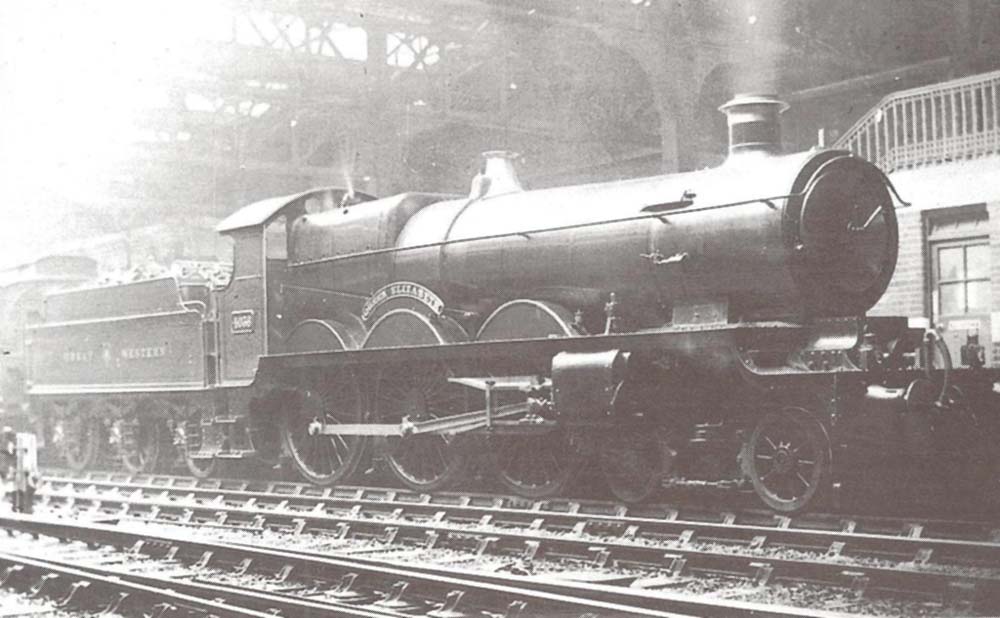|
|
 |
 |
|
GWR Route: Banbury to Wolverhampton
GWR Route: North Warwickshire Line
Birmingham Snow Hill Station: gwrbsh1749
 |
Great Western Railway 4-6-0 40xx (Star) class No 4036
‘Queen Elizabeth’ at Snow Hill platform No 7 with a two hour up
express for Paddington in the period 1912 to 1915. The first coach in the train
is a ganged clerestory type, typical for the period. Locomotive No 4036 was
built at Swindon Works in December 1910 as part of lot 180. The Star class were
designed by the Great Western Railway's Chief Mechanical Engineer (CME) George
Jackson Churchward as crack express locomotives built for fast non-stop runs.
He incorporated many American features and the French four cylinder arrangement
as a simple with two sets of valve gear to give a superior free running
locomotive. The superheated standard No 1 long tapered boiler with belpaire
firebox operating at 225 lbs per sq inch and fourteen-and-a quarter inch
cylinders with a long stroke produced a locomotive with a tractive effort (at
85%) of 25,090 lbs, which meant they were placed in power group class D. With a
maximum axle weight of 18 tons 12 cwt they were limited to the main Red Routes,
but the design was so successful the Great Western Railway never departed from
it and the later Castle and King classes were enlarged versions. In the
photograph No 4036 is fitted with topfeed, which became a standard feature in
1913. It also still has bogie brake gear, which was removed from all the Star
class engines from November 1923 and spring equalising gear, which was removed
from about 1930. In July 1943 outside elbow steam pipes were fitted.
The locomotive and tender are seen fully lined with the
Garter ‘Coat of Arms’ between the words ‘Great Western’ on
the tender. This was a livery used between 1911 and 1915 and again between 1923
and 1927. The brass beading seen on the coupled wheel splashers, was however
removed during the First Would War and never replaced. No 4036 was originally
allocated to Old Oak Common (PDN) and was known to have been allocated there in
both January 1921 and January 1934. In January 1938 No 4036 was allocated at
Landore shed (LDR) and prior to nationalisation in December 1947 was allocated
at Swindon shed (SDN). Under British Railways No 4036 was known to have been
allocated to Swindon shed (82C) in August 1950 and was withdrawn from there in
March 1952. In this photograph the locomotive is paired with a 3,500 gallon
Churchward pattern tender with long side fenders, which had a coal capacity of
seven tons. These long fendered tenders were introduced with lot A79 in
November 1910. By January 1934 this locomotive was paired with Tender No 2594,
which was a 4,000 gallon Collect pattern flush bottom tender built in early
1932 as part of lot A124. This tender had a coal capacity of six tons.
Robert Ferris
 back back

|
|
|
